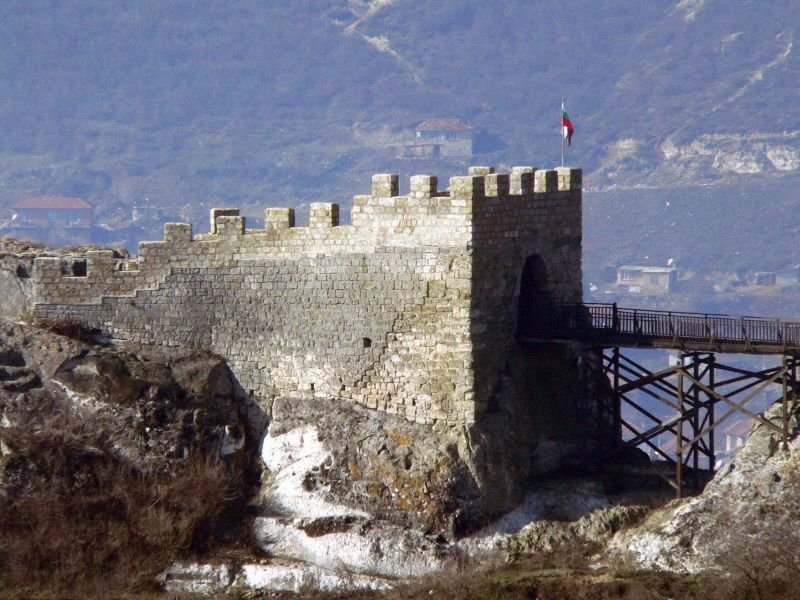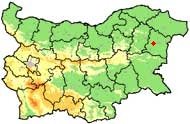Ovech Fortress
Type: Fortress
Location: Town Provadia »
In Bulgarian: Крепост Овеч »
The remains of an ancient fortress of Ovech are located on a high rocky hill, east of town of Provadia. It is surrounded from all sides by rocks and has a ship shape. The name Ovech origins from Slavic as transcription of the name "Ram Fortress" as it was called by Byzantines.
The fortress was built by the Byzantines in the IV century and was used by them to the beginning of VII century. After this the fortress become inactive for nearly a century. It is used again from XI century to the end of XVII century. Ovech fortress was part of a Byzantine defense system, hindering the invasion of northern tribes, and after it came under Bulgarian control, the fortress played key role in many battles during the First Bulgarian Kingdom. During the Second Bulgarian Kingdom, Ovech was already an important administrative and military centre.
Today from the Ovech fortress are preserved and can be seen the bridge structure between the fortress and the plateau Tabiite (fully restored), multiple wells used for water collection (one of which is 80 m deep), tanks for grain, the ruins of the churches, turrets, the stone North Gate, remains of prison buildings, marble columns of Omurtag and others.
The fortress was built by the Byzantines in the IV century and was used by them to the beginning of VII century. After this the fortress become inactive for nearly a century. It is used again from XI century to the end of XVII century. Ovech fortress was part of a Byzantine defense system, hindering the invasion of northern tribes, and after it came under Bulgarian control, the fortress played key role in many battles during the First Bulgarian Kingdom. During the Second Bulgarian Kingdom, Ovech was already an important administrative and military centre.
Today from the Ovech fortress are preserved and can be seen the bridge structure between the fortress and the plateau Tabiite (fully restored), multiple wells used for water collection (one of which is 80 m deep), tanks for grain, the ruins of the churches, turrets, the stone North Gate, remains of prison buildings, marble columns of Omurtag and others.









